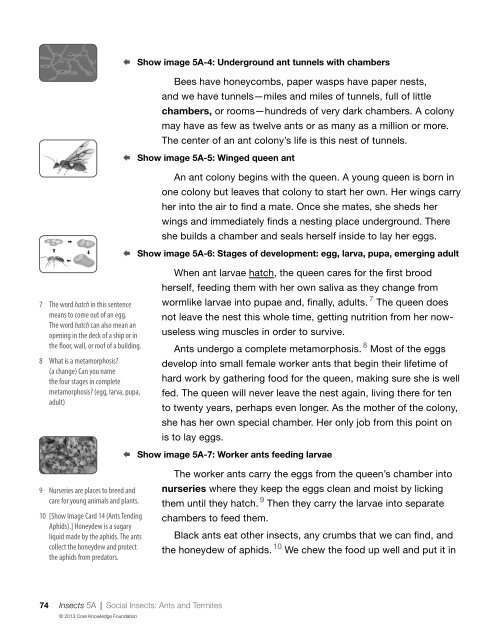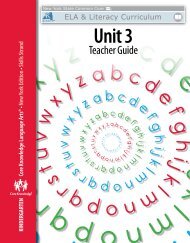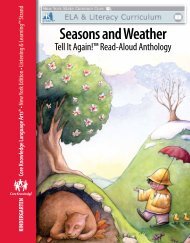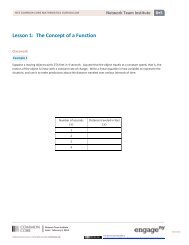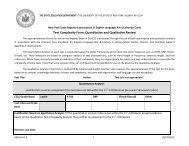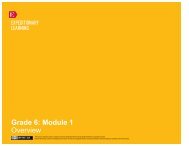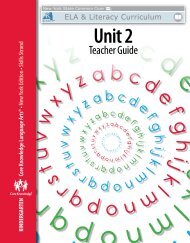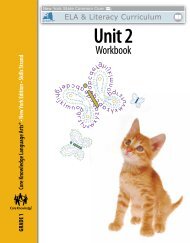Read-Aloud Anthology - EngageNY
Read-Aloud Anthology - EngageNY
Read-Aloud Anthology - EngageNY
You also want an ePaper? Increase the reach of your titles
YUMPU automatically turns print PDFs into web optimized ePapers that Google loves.
Show image 5A-4: Underground ant tunnels with chambers<br />
Bees have honeycombs, paper wasps have paper nests,<br />
and we have tunnels—miles and miles of tunnels, full of little<br />
chambers, or rooms—hundreds of very dark chambers. A colony<br />
may have as few as twelve ants or as many as a million or more.<br />
The center of an ant colony’s life is this nest of tunnels.<br />
Show image 5A-5: Winged queen ant<br />
An ant colony begins with the queen. A young queen is born in<br />
one colony but leaves that colony to start her own. Her wings carry<br />
her into the air to find a mate. Once she mates, she sheds her<br />
wings and immediately finds a nesting place underground. There<br />
she builds a chamber and seals herself inside to lay her eggs.<br />
Show image 5A-6: Stages of development: egg, larva, pupa, emerging adult<br />
7 The word hatch in this sentence<br />
means to come out of an egg.<br />
The word hatch can also mean an<br />
opening in the deck of a ship or in<br />
the floor, wall, or roof of a building.<br />
8 What is a metamorphosis?<br />
(a change) Can you name<br />
the four stages in complete<br />
metamorphosis? (egg, larva, pupa,<br />
adult)<br />
When ant larvae hatch, the queen cares for the first brood<br />
herself, feeding them with her own saliva as they change from<br />
wormlike larvae into pupae and, finally, adults. 7 The queen does<br />
not leave the nest this whole time, getting nutrition from her nowuseless<br />
wing muscles in order to survive.<br />
Ants undergo a complete metamorphosis. 8 Most of the eggs<br />
develop into small female worker ants that begin their lifetime of<br />
hard work by gathering food for the queen, making sure she is well<br />
fed. The queen will never leave the nest again, living there for ten<br />
to twenty years, perhaps even longer. As the mother of the colony,<br />
she has her own special chamber. Her only job from this point on<br />
is to lay eggs.<br />
Show image 5A-7: Worker ants feeding larvae<br />
9 Nurseries are places to breed and<br />
care for young animals and plants.<br />
10 [Show Image Card 14 (Ants Tending<br />
Aphids).] Honeydew is a sugary<br />
liquid made by the aphids. The ants<br />
collect the honeydew and protect<br />
the aphids from predators.<br />
The worker ants carry the eggs from the queen’s chamber into<br />
nurseries where they keep the eggs clean and moist by licking<br />
them until they hatch. 9 Then they carry the larvae into separate<br />
chambers to feed them.<br />
Black ants eat other insects, any crumbs that we can find, and<br />
the honeydew of aphids. 10 We chew the food up well and put it in<br />
74 Insects 5A | Social Insects: Ants and Termites<br />
© 2013 Core Knowledge Foundation


